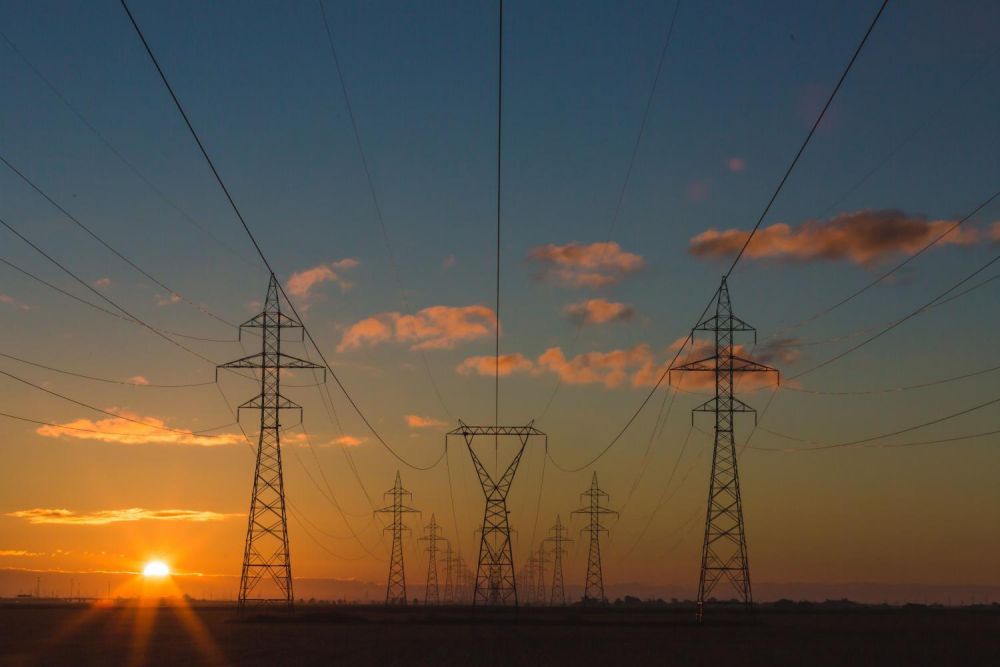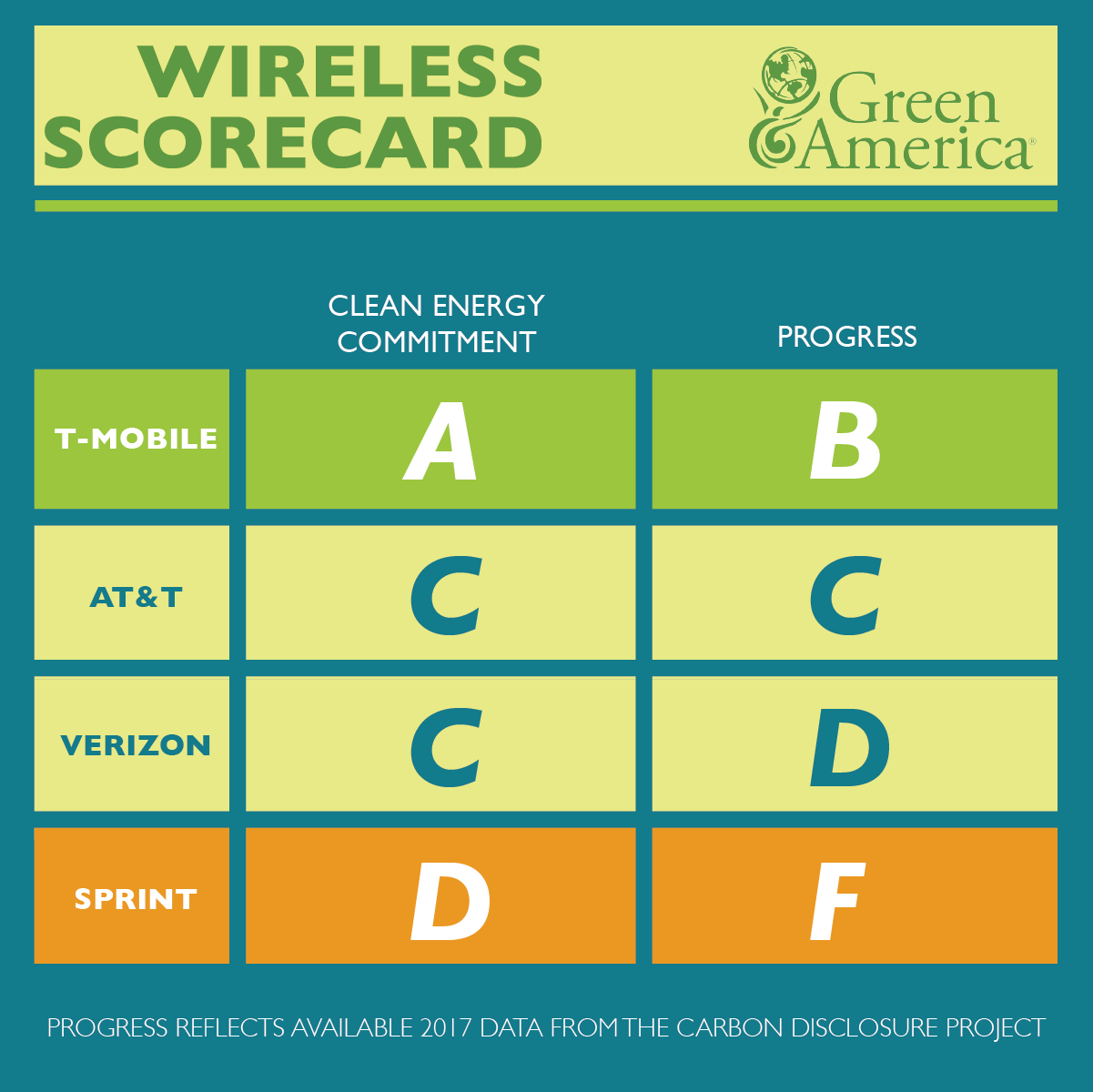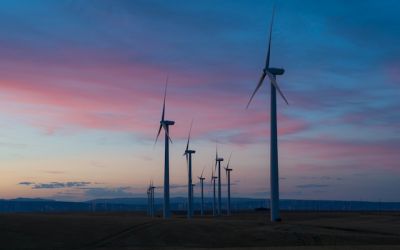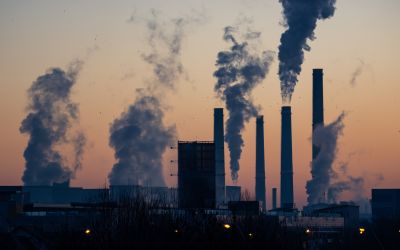Report: Clean Energy is Calling
In 2017, Green America launched a campaign titled “Hang Up on Fossil Fuels” that urges the two largest telecom companies in the U.S., AT&T and Verizon, to set a goal of reaching 100% renewable energy by 2025. This report was originally published in March 2018, and in the past year, there have been considerable updates and progress to include in this new version.

In 2017, Green America launched a campaign titled “Hang Up on Fossil Fuels” that urges the two largest telecom companies in the U.S., AT&T and Verizon, to set a goal of reaching 100% renewable energy by 2025. This report was originally published in March 2018, and in the past year, there have been considerable updates and progress to include in this new version.
THE PROBLEM
The telecom sector uses enormous amounts of energy each year. The sector is using enough electricity to power all the households in New York City. The four largest companies – AT&T, Verizon, Sprint and T-Mobile – collectively use more than 30 million MWh of electric power each year. AT&T and Verizon, the two leading US companies in the industry, have a combined electricity usage that could power 2.6 million homes for a year. Historically, the vast majority of this sector was powered on fossil fuel energy, but there have been steps taken to increase its use of clean energy in the past year. After Green America announced its “Hang Up on Fossil Fuels” campaign in 2017, tens of thousands of consumers reached out to AT&T and Verizon urging them to use clean energy.
A large portion of this energy (90%) powers wireless access networks, towers and other infrastructure allowing cell phone users to access data and connect nationwide.
The bulk of the energy used by telecoms goes to power wireless networks, towers, and other infrastructure. Data centers make up the remainder of the energy used and are a rapidly growing driver of climate emissions worldwide. Data centers are central locations of computing and networking equipment and have existed since computers became a part of our lives. The telecommunications industry relies heavily on these centers and access networks running 24/7 so we can access them at anytime, and stay connected to our friends and families. That connectivity comes at a high environmental cost since data centers and networks serving the telecom industry are powered by fossil fuels.
KEY FINDINGS
A review of the four major telecoms in the US conducted by Green America found the following:
- Renewables: Only one major telecom company, T-Mobile, has made a commitment to move to 100% renewable energy. AT&T has announced the purchase of 820 MWh of wind energy, which we estimate will take its overall consumption of clean energy to approximately 30% of total energy used. Verizon and Sprint are both utilizing less than 2% renewable energy, although Verizon has committed to reaching 50% by 2025. Verizon’s previous goal was to reach a mere 4% of clean energy over the next decade.
- Intensity and Usage: AT&T, Verizon, and Sprint have all lowered their energy intensity (increased efficiency) over the past decade. As a result, AT&T and Verizon have kept their energy use and emissions constant. Sprint has significantly reduced its energy usage. T-Mobile is the only company to see an increase in energy usage over the past decade, although as of 2016 it has started to decrease. However, in comparing the four companies regarding their energy intensity in relation to revenues or customers, AT&T and Verizon use far more energy per revenue dollar or per customer than Sprint or T-Mobile.
- Overall Greenhouse Gas (GHG) Emissions: AT&T and Verizon have not set goals for reducing overall emissions. Sprint made a commitment to reduce overall emissions by 20% by 2017, and more than doubled that target with a reduction of 47%. T-Mobile has committed to reduce Scope 1 and 2 emissions 95% from a 2016 baseline year by 2025. In this report we track both Scope 1 emissions (from sources that are owned or controlled by the organization) and Scope 2 emissions (from the consumption of purchased energy). In the telecom sector, Scope 2 emissions are much greater per company than Scope 1 since most of the energy used is purchased electricity, which is why the rapid transition to renewables is so important.
- Renewable Energy is a sound business decision: The availability of wind and solar energy in the United States is growing dramatically and the cost is going down. Wind power is increasingly the least expensive form of energy generation available in several areas of the country. In announcing its commitment to reaching 100% renewable power by 2021, T-Mobile highlighted the fact that the company expected to save approximately $100 million in the next 15 years. By this estimation, a company the size of Verizon could potentially reach $500 million in savings by moving to 100% clean energy.
GREEN AMERICA’S WIRELESS SCORECARD
Based on publicly available data and information provided directly to Green America by companies, we graded each of the companies on core metrics related to efficiency, clean energy and greenhouse gas emissions reductions.

THE SOLUTION
The telecommunications industry can make great strides in reducing fossil fuel use, which requires the major companies achieving clean energy goals in a responsible timeline. To reduce our climate emissions at the speed and scale necessary to address the climate crisis, all companies should commit to shift to 100% renewable energy and reduce their GHG emissions. T-Mobile has made the strongest commitment to renewable energy to date, with a goal of 100% energy from wind by 2021, and by joining RE100, a global initiative uniting companies that are all committed to 100% renewable energy. AT&T, Verizon, and Sprint should adopt a goal of 100% clean energy before 2025, along with overall carbon emission reduction goals and deadlines for each step. Clean energy means solar and wind power, with a complete phase out of coal, nuclear, and natural gas. Clean energy options are increasing every year, in large part to satisfy the demands set by major corporations, states, municipalities, and other institutional purchasers. If major IT companies like Apple and Google can achieve 100% clean energy, telecom companies can, too.
Donwnload the full report here.
Visit Green America's website here.



_400_250_80_s_c1.jpg)


